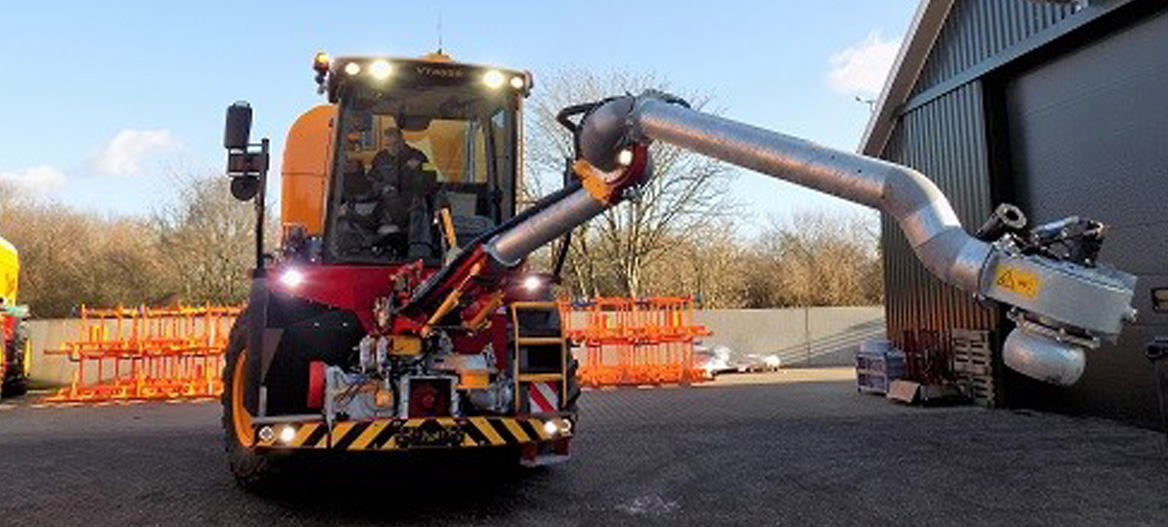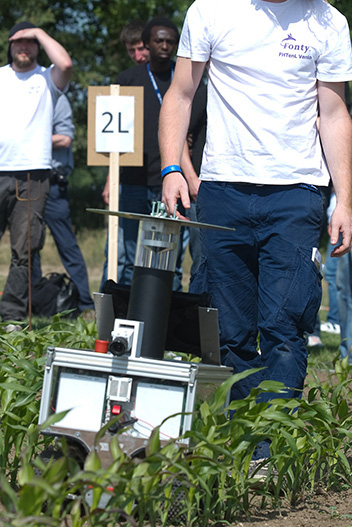
„Once you've seen the difference, you won't want anything else."
03/28/2019Despite lighting equipment on agricultural machinery becoming increasingly more important, it is still often regarded as a minor matter. However, we have been seeing changes: high-quality lighting concepts are increasingly gaining significance in this area too. Hans de Vree, Managing Director and Head of Development at Vredo Dodewaard
, can confirm this. Read here how he assesses the situation
Quality machinery from the Netherlands
Vredo Dodewaard, based in a town in the Netherlands with the same name, builds agricultural machinery focusing mainly on slurry technology as well as reseeding - and always aims to provide customers with quality products, offering genuine, financial added value.
"We don't give our customers the choice when it comes to our products' quality," says Hans de Vree, adding, "we just always deliver top quality. As a result, we have developed components in house, for instance the transmission. Its development may have been very expensive, but it met the achieved aim of reducing the machinery's fuel consumption and boosting its tractive power. These are two aspects that are paramount to our customers and will leave them with more money in their pockets. Nowadays milk producers no longer receive a good price for their product, so they need to ensure that manure is used optimally and distributed as efficiently as possible across areas used for agriculture by applying it at maximum capacity to soil that has not been excessively compacted. We might be unable to keep up with our competitors' purchase prices. However, it's not just the price that counts, but also the yield rate for both agricultural machinery operators and farmers. If you look at it like that, Vredo provides what you are looking for."
Straight-forward lighting
At Vredo Dodewaard, we apply the same standards to lighting. That's why Hans de Vree uses HELLA as standard: "We opt for top quality, and that's why we equip all our machines with HELLA lamps. HELLA may be a little more expensive, but their products offer the very best value for money. Another thing we keep hearing is that competition on the market is getting tougher all the time. But if you scrutinize offers before buying and compare three lamps with each other, HELLA will always come out on top. In my opinion, critical testing means assessing lamps' function from a practical point of view: an light beam offering even brightness and optimum functionality across the entire range is critical. With these quality features in mind, we asked a number of manufacturers to stage a night-time light show. There is significant pressure on the market and lots of little savings really add up so the price of HELLA products is also taken into account. During the show at our premises, HELLA once again demonstrated how it's products are unrivaled leaders in terms of lighting quality. Customers who have seen the difference will never look back."
The right illumination makes the difference
When it comes to choosing agricultural machinery, terms like soil compaction, capacity, comfort and ease of use enter into the equation. Hans de Vree knows that lighting also plays an important role, as he explains "today we operate machinery with a total weight of sixty metric tons. Some people will be asking themselves how weight influences lighting. Well, our largest machines with tank capacities of 32 000 litres are eleven metres long and handle working widths of up to 36 metres. You need to be able to clearly see what's happening over the entire working area. On the one hand, we need lighting to guarantee a good overview, and on the other hand, lighting must ensure that the vehicle itself is clearly visible."
de Vree adds that "the seasons are getting shorter, and therefore we must make the most of field capacity days. I think almost half of our machines are in 24/7 operation in February. And we can guarantee exactly that with good lighting. If you ask me, there should be no difference in output between day and night. Accidents are inevitable if you use vehicles with inadequate lighting. HELLA is miles ahead of the rest in terms of weight and high quality. The luminous efficacy and quality of HELLA products are second to none."
No inferior solutions required
Valuable machinery requires high-quality lighting with good value for money. Vredo Dodewaard didn't have to spend a lot of time hunting around before they realised that HELLA's new product line was what they were looking for. Hans de Vree: "In my opinion, what counts is the lumen figure you can only perceive (theoretical values will not give you the full picture). HELLA is far ahead in this respect. A good ten years ago, when our vehicles were still equipped with xenon lighting, we were taking aerial photographs of our vehicles with the lighting switched on to determine whether all of the area around the machine was evenly illuminated. All areas appeared adequately illuminated, proving the high quality of HELLA lamps." Vredo also offers options generating twenty percent more light. "However, this comes at a surcharge."
Inferior quality solutions are out of the question at Vredo Dodewaard. "Savings shouldn't come back to bite you. We currently apply first class lighting solutions throughout and I'm sure our customers would immediately notice if we switched to a brand delivering inferior quality. Complaints along the lines of "the lights are on, but it's not enough" would only be a logical consequence."
Convincing arguments
Vredo Dodewaard customers are not always aware of how crucial lighting is and they initially focus on other elements including soil compaction, technology and fuel consumption. However, the majority are won over by hard facts. "More and more customers are asking for a demonstration. Anyone trying our machines for a few days will literally see the need for adequate lighting. You need to have the right feeling when you purchase machinery in this price category and the lighting concept we selected lives hits the spot perfectly. Lighting is also an emotional aspect and we can feel that HELLA is the best choice for our customers," Hans de Vree explains.
Article based on publication at www.deloonwerker.nl

